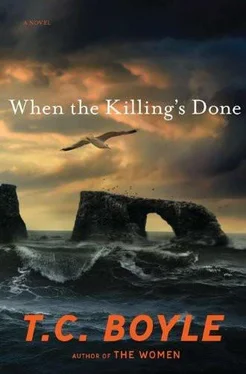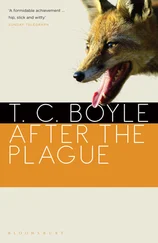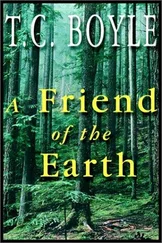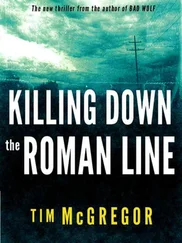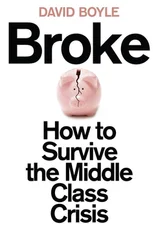And she went off into her tutorial mode, unraveling a parable of cause and effect that might have seemed like a sick cosmic joke if it weren’t so catastrophic. The whole thing started with Montrose Chemical dumping DDT during the war, the DDT working its way up the food chain and preventing the eggs of the native bald eagles from forming properly. The balds — aggressive, highly territorial and primarily piscivorous — died back, and the goldens, which prey on land animals, cruised in from the coast to colonize the islands, attracted by the bountiful food resource presented by the wild hogs, Sus scrofa , that should never have been there in the first place. But then — and here’s where she paused to let the lesson play itself out — you can never foresee how a closed ecosystem is going to react not only to introduced elements but to their elimination as well. The sheep had overgrazed and that kept the invasive fennel down, but once the sheep were removed the fennel sprang up in all but impenetrable thickets ten feet high, which provided ideal cover for the pigs. “So,” she’d said, her mother’s gaze bright but fading, “you’ve got no balds to keep the goldens away and the goldens are nesting and hungry but with fewer and fewer pigs available. In that case, what do you think they’re going to eat?”
Ed, who by this time had shifted to the couch, where he seemed to be monitoring two baseball games simultaneously with the sound muted, looked up and said, “Foxes. Cute little dwarf foxes.”
It wasn’t till one of the biologists began to notice a falloff in the population that they began to trap and radio-collar the foxes. In the mid-eighties the island-wide population was robust, in the range of three thousand individuals. By the late nineties it was a tenth of that and no one could determine the cause of the decline.
“We were in danger of seeing the fox go extinct. On our watch,” she said. “Look”—she carried her laptop over and set it on the kitchen table, canting the screen so that Ed could see it too, and brought up the image of a single golden eagle chick perched proudly on its nest with the remains of twenty foxes scattered beneath it, some still wearing their radio collars. “That was our proof. We followed the radio signals and this is what we found.”
So the eagles had to be trapped and removed, no easy task. First they tried netting them on the wing out of the door of a helicopter, but it was like trying to catch butterflies on a roller coaster, and even if they’d been successful, there was the problem of the eagles surviving the fall. It was Tim who came up with the idea of baiting the birds to a carcass rigged with a spring trap that when activated would shoot out a net to ensnare them, and that worked, to a degree. In the interim the biologists trapped as many foxes as they could and caged them for a captive-breeding program, which to date had produced eighty-five kits to be released once the goldens were gone and balds could be brought in from Alaska to reestablish a viable breeding colony. The thinking was that the balds would keep the goldens at bay and that the goldens would have no incentive in nesting on the island once the pigs were removed.
The question everyone asked at this juncture — the question Dave LaJoy asked endlessly, vociferously, in the press and on the pavement — and the question her mother asked then, was: “Why can’t you just trap the pigs alive? And bring them back for, I don’t know, for farmers or something? Or food? Think of all the starving people in the world.”
“Believe me,” she’d said, “we would if we could. But there isn’t a federal agency that would allow it. The risk is just too great.”
The fact was that these hogs — Santa Cruz Island hogs — were a discrete population that had had no interaction with outside populations in a hundred and fifty years, and thus could carry leptospirosis, foot and mouth disease, mutations of common bacteria and viruses that could burn through the American hog industry and leave it twitching in the mud. So there was no choice but to euthanize them. With bullets, two each, the first to the heart, the second to the head, according to the American Veterinary Association guidelines. Clean kills. As swift and final as fate. And the carcasses? All that wild-bred pork? The carcasses were to be left where they lay for the entertainment of the ravens and the benefit of the soil.
“The thing is,” Frazier is saying, now dabbing at a bright smear of egg and hollandaise at the corner of his mouth, “with pigs you get ninety percent of them right off, but it’s that remaining ten percent that gives you hell. And you can’t run the risk of missing a single individual because that could be a pregnant sow for all you know and then the whole business just starts in over again.”
The oatmeal goes down like a brick, the wrong thing to order, definitely the wrong thing. Her stomach is on fire suddenly — too much coffee, too much tension, dealing with her mother, hitting the squirrel, fighting traffic to get here — and she has to square herself in the chair and sit rigid a moment till the burning passes. Is she developing an ulcer, is that it?
“Aerial starts when — next week? That’s what you’re projecting?” Freeman asks, leaning into the table, the rind of his grapefruit at one elbow, coffee cup at the other. The pen in his breast pocket has left a dark blue Rorschach blot on his pale blue shirt and the silver points of his bolo tie are tarnished — or maybe they’re smudged with ink. But his eyes are bright. He’s attached to the notion of the park superintendent as a man of action, like the legendary Bill Ehorn, who flew into San Miguel to personally pull the trigger on the last pregnant jenny, thus ending the occupation of the island by introduced mules, and Alma knows he’s angling for an invitation.
Frazier nods genially. “As best we can figure. Because we’re already having good success on the ground, but we need to get up on the ridges and work our way down. And I tell you, you only do a kill if you can get the whole group. If there’s a chance even one’ll get away, you draw back. Because, you understand, these are very clever animals — they say they’re smarter than dogs, smart as a three-year-old child for that matter, but for my money even the dopiest dog beats that. . anyway, they’ll communicate to the others and go into hiding. And that’s a nightmare.”
Alma catches the waitress’s eye from across the room, thinking to expedite things and get the check now, but the waitress misinterprets her meaning and brings the coffeepot back round. Frazier, gesturing broadly now, holds out his cup to be refilled, giving the girl a quick wink and then going on about how while aerial is indispensable the real hunt takes place on the ground, now that the dogs — his own dogs, from New Zealand — are out of quarantine. And then, Freeman and Annabelle edging their cups forward for refills while Alma lays a palm over hers and mouths, “Check, please,” he brings up his Judas pigs, a concept so devious it gives her a thrill every time he mentions it.
Annabelle, who to this point hasn’t been as closely involved with the details of the hunt as she herself has, gives him a bemused smile and drops her voice. “Judas pigs?” she echoes. Her look says, Amuse me .
And Frazier stops right there to take in that look and sweep his eyes over the restaurant, the retreating waitress, the view out the window, before he comes back to her. “Oh, yeah,” he says. “Very effective in an operation like this. You see”—leaning in over his plate to pin her with his gaze—“we use their own sex drive against them, and if that seems unfair, well, dearie, I guess it is. But this isn’t a game. This is war. All-out war. And wave goodbye to the little piggies.”
Читать дальше
